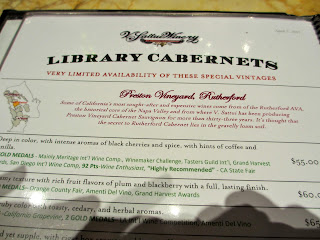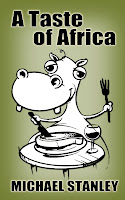The latest issue of
Mystery Readers Journal focuses on Environmental Mysteries (Volume 29:1). You'll want to
check out the entire issue, but here's a great essay by Crime Writer
Lisa Brackmann that appears in this issue.
Lisa
Brackmann is the author of the critically acclaimed suspense novels, ROCK PAPER
TIGER and GETAWAY, and the upcoming HOUR OF THE RAT (Soho). She is a California native
and has lived and traveled extensively in China.
LISA BRACKMANN:
LOOKING FOR SNOW LEOPARDS
Lately I’ve been a little obsessed with snow leopards. I’m not sure why. They’re beautiful and shy and endangered, living in a shrinking habitat threatened by human encroachment, by global warming. I’ll probably never see one in the wild, but I like knowing that they’re there, lurking in some remote Himalayan mountain wilderness.
To some extent my obsession with snow leopards is a lot like my
environmentalism in general. I’m not really a big nature gal. I prefer wandering in cities to hiking up remote mountaintops. But I like knowing that unspoiled wilderness is out there.
I’ve been concerned about environmental issues since I was a kid. I think it was the oil spill off Santa Barbara that did it – that iconic LIFE MAGAZINE cover of the oil-soaked sea bird. Plus, that TV commercial, with the Indian weeping one single tear over trash-strewn wilderness. Even if he was actually Italian.
On a more rational level, seeing how in my own lifetime environmental regulations have greatly improved the air in my home state of California made me a believer. Also, my summer job of many years, working at the San Diego Zoo. The Zoo is a non-profit organization with a mission to preserve endangered species and protect the habitats necessary for those species to survive and thrive. You can’t help but absorb some of that, even if your job is flipping burgers or ringing up T-shirts and postcards.
And growing up by the ocean. Even if I’m not a nature gal, smelling the brine, digging my toes into the sand, watching the waves, the water that goes on forever, that is so overwhelmingly vast. We’re a part of nature. We need to be reminded of that.
I’ve belonged to so many environmental organizations that I lose count. I spend a lot of time every day signing online petitions. Reposting and retweeting them. Does this do any real good? I don’t know. But someone sends me an email to save wolves, or redwoods, or polar bears, or prairie chickens, or snow leopards, I sign it. Stop Keystone XL, I sign it. Save the Arctic Wildlife Refuge, signed. Tweeted. Reposted.
I drive a high-mileage car, when I actually drive it. Mostly, I walk. Where I’m living now, if it’s too far to walk, I take public transportation. That’s a luxury that a writer working from home has that others don’t, I realize.
These are all small things. I don’t know what the big thing I could do that would help might be. Except for one, and maybe it’s not that big either.
I write novels. Quirky suspense, with some humor. I include issues that I care about. Things that make me angry. Things that I think that are important.
For my third book,
HOUR OF THE RAT, I decided that I wanted to deal with environmental issues.
HOUR OF THE RAT is a sequel to
ROCK PAPER TIGER. Like
RPT, HOUR OF THE RAT takes place in contemporary China and features the somewhat battered, at times self-medicating, PTSD suffering, perennially snarky heroine, Ellie McEnroe.
It’s no great stretch to work in environmental concerns in a book set in today’s China—just look at the horrific smog that blanketed northern China this past January, pollution that was so severe that it exceeded “hazardous” on the Air Quality Scale, going into levels of badness for which there are no labels on the monitors—just “Beyond Index.” China’s cities are some of the most polluted in the world. There are “cancer villages” throughout the country, drinking water contaminated with heavy metals, crops tainted with pesticides and adulterants, massive desertification, dead and dying rivers.
In many ways, China’s turbo-charged modernization has been an amazing success story. But for China’s environment, it’s largely been a disaster. There are many reasons for this, not the least of which was the attitude of the first Chairman of the People’s Republic, Mao Zedong. Mao believed that China’s people were a blank slate that he could write upon, and that the natural environment could be remade as well. It was all a matter of applying sufficient will. The slogan “Man must conquer nature” ruled the day.
Mass movements like the Great Leap Forward and the Cultural Revolution greatly contributed to China’s ecological devastation, but one also could argue that the severe damage to China’s economy they inflicted slowed down the rush to “industrialize at any cost.” By the 90s, however, the brakes were off. Not only because of a desire on the part of the central government to lift China’s one billion citizens out of poverty and to create a modern, powerful state, but because a small number of people were able to get very, very rich in the process.
On paper, China has powerful and even progressive environmental regulations (and some admirable goals for renewable energy and green development, and a growing, serious commitment to greatly reduce the use of coal). On the ground, SEPA, China’s EPA, lacks the enforcement budget to go after polluters in any comprehensive way, and all across China, factories pollute with impunity. Local officials take kickbacks for permitting projects that don’t pass environmental reviews, and meanwhile, back in Beijing, the central government worries that throttling back unbridled growth will increase unemployment, and therefore, social unrest.
But unbreathable air and poisoned rivers also create unrest. Many of the approximately 180,000 “mass incidents” (e.g., protests) in China last year were provoked by pollution or other environmental concerns. From poor farmers protesting factories that destroy their crops to wealthy urban dwellers who would like to be able to breathe safely in their own cities, these issues cut across class, profession and location.
Also, across borders.
By setting a novel in China that deals with environmental issues, my intention is not to let the Western world off the hook. A major plot strand of
HOUR OF THE RAT has to do with the outsourcing of “First World” pollution and the consequence of a U.S. “agricultural industrial complex” that has more in common with manufacturing than it does with farming. (I’ll leave the details for the book)
I realize that this all sounds pretty heavy. But when I was writing
HOUR OF THE RAT, I referred to it as “a light-hearted romp through the environmental apocalypse,” and I like to think that’s true. It’s a suspense novel with a good dose of humor, and the last thing I want to do is to be didactic.
Also, in spite of China’s environmental crisis, the country still has some of most stunning landscapes on the planet, and I wanted to share a few of those with you: the surreal beauty of Yangshuo, the wildness of Guizhou, Dali’s combination of charming traditional architecture and gorgeous mountain scenery. Ellie may not be the most reliable tour-guide (she goes to a couple of places I’d recommend you avoid), but trust me, it’s hard to beat floating down the Yuelong River on a bamboo raft.
And snow leopards. I know they are there, hiding in China’s mountains. Even if I never see them.








































